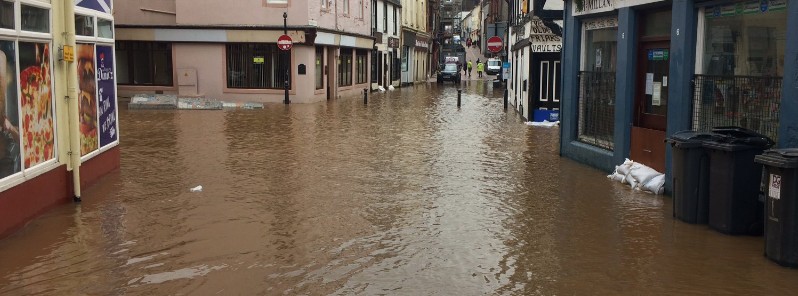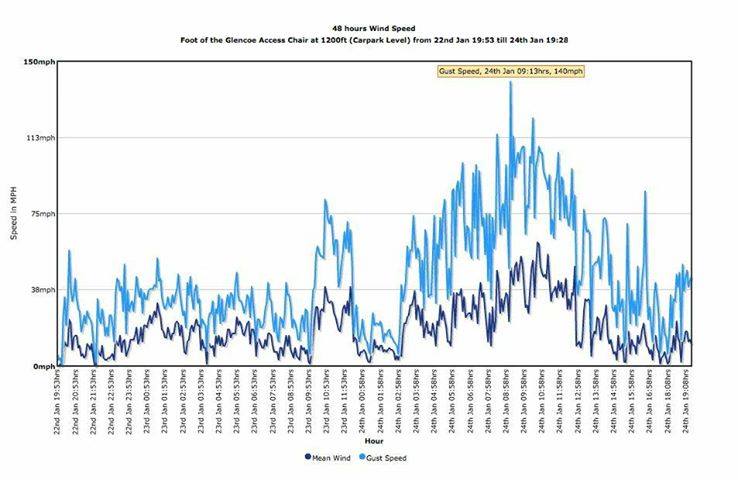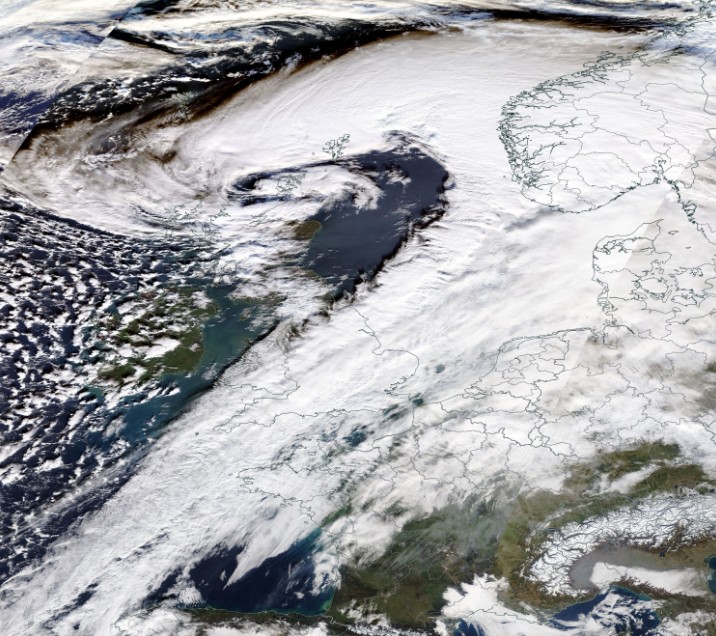Storm Georgina hits Scotland with heavy rain, gusts up to 225 km/h (140 mph)

A rapidly developing low pressure system, named Storm Georgina by the UK Met Office, swept eastwards over northern Scotland on January 24, 2018, before moving out into the North Sea and Norway. Early analysis shows that a sting jet could have formed over the sea west of the Western Isles during the early hours of Wednesday.
Gusts were generally in the 80 – 96 km/h (50 to 60 mph) range with up to 136 km/h (85 mph) in western Scotland and up to 225 km/h (140 mph) in Glencoe. There are reports of wind damage in some counties and hundreds of homes across Galway, Tipperary, Cork and Wexford in Ireland without power.


Storm Georgina January 24, 2018 – Scotland. Credit: NASA Terra/MODIS
Heavy rain and snowmelt caused flooding in parts of southern Scotland, with Scottish Environment Protection Agency issuing 32 flood warnings at one point.
The worst of the flooding hit Whitesands area of Dumfries as the River Nith burst its banks after reaching 4.25 m (13.9 feet) at around 16:00 local time. The levels were well above its normal range of 0.3 to 3 m (1 – 9.8 feet).
Rail services have been disrupted after a landslide buried tracks near Kirkconnel in Dumfries and another between Glasgow and Edinburgh.
Latest photos from the Whitesands in #Dumfries.
Whitesands remains closed due to the flood water. #DGRoads pic.twitter.com/TRILaM0ke9
— NithsdalePolice (@NithsdalePolice) January 24, 2018
River Nith in Dumfries crosses The Whitesands this afternoon. #Dumfries. #nith #flood pic.twitter.com/Af1SzbjO7F
— Jim W (@jimslaptop) January 24, 2018
River Nith has burst it's banks today causing flooding on several roads. Be #FloodAware and avoid driving through flood water. #DriveAware pic.twitter.com/1SDcJgUmJS
— @DGfire.safety (@DGfire_safety) January 24, 2018
According to the UK Met Office, an early analysis shows that a sting jet could have formed over the sea west of the Western Isles in the early hours of Wednesday morning. Sting jets can cause very high wind speeds in a concentrated area and occur when air rapidly descends from high in the atmosphere. Sting jets have been observed in past storms including Storm Doris of February 2017 and the 1987 Great Storm.

The country is now bracing for a cold plunge with temperatures dropping to -4 °C (24.8 °F) and even snow in the 24 hours after the storm.
Georgina is the 7th named storm to hit the UK this season, 8th if we count Ex-Hurricane Ophelia.
Featured image: Whitesands in Dumfries, Scotland on January 24, 2018. Credit: Nithsdale Police

Commenting rules and guidelines
We value the thoughts and opinions of our readers and welcome healthy discussions on our website. In order to maintain a respectful and positive community, we ask that all commenters follow these rules.